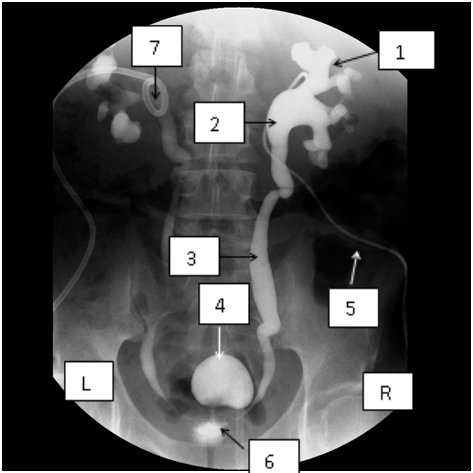Percutaneous nephrostomy is the insertion of a drainage catheter through the skin into the collecting system of a kidney to relieve obstruction of its drainage system.
Kidney cells produce urine which passes into the renal tubules and empties into the renal calyces. From the calyces, urine passes into the renal pelvis through the renal infundibula and from the pelvis empties into the urinary bladder through the ureter; it is then voided through the urethra.
Diseases of the urethra, the bladder, and the ureter may obstruct the flow of urine causing it to accumulate in and dilate the structures above the obstruction. Stones and strictures are the commonest causes of such obstruction. Untreated and, depending on its severity, the pressure built up by the obstruction may damage the kidney cells or the static urine may become infected.
The obstruction may be relieved by the insertion of a ureteral stent through the urethra or, if this is not possible, the urine drained by the insertion of a tube into the renal pelvis through the skin (percutaneous nephrostomy). Such diversion of urine may be temporary or permanent depending on the nature of the obstructing disease and the feasibility of relieving the obstruction with a ureteral stent.
The image below shows the final image after I carried out bilateral percutaneous nephrostomies in a man with bladder outlet obstruction due to prostate cancer.

Key to the image: 1 = Right renal calyx; 2 = Right renal pelvis; 3 = Right ureter; 4 = Urinary bladder; 5 = Pigtail catheter in right renal pelvis; 6 = Narrow prostatic urethra due to prostate cancer; 7 = Pigtail catheter in the left renal pelvis. Observe that the obstruction of the left structures is less severe than the obstruction on the right. The patient was prone for the procedure, hence the seeming switching of his sides.



